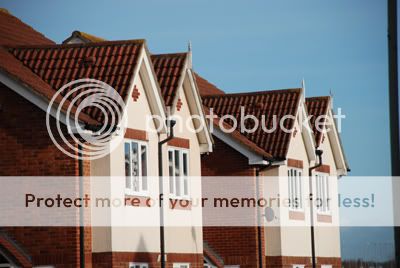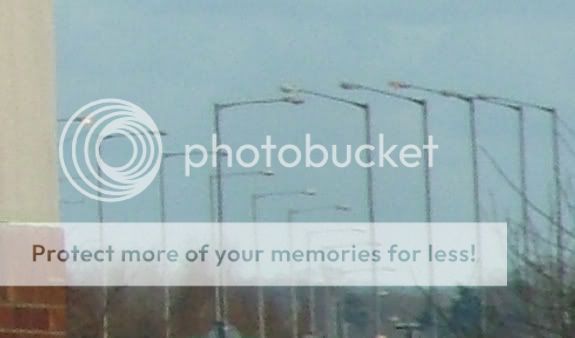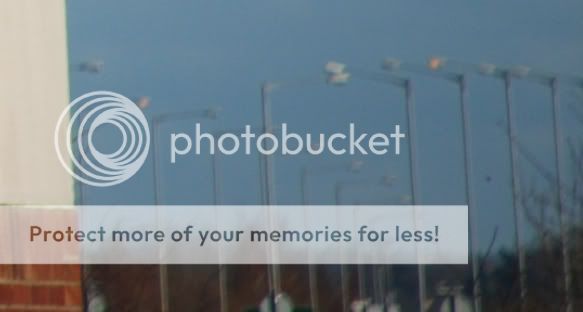- Messages
- 29,408
- Name
- Marcel
- Edit My Images
- Yes

Nikon announces the D80 Digital SLR camera
RRP:
- D80 Body only £699.99
- D80 + 18-70mm £899.99
- D80 +18-135mm £949.99
Sales release date: September 2006
Nikon UK is pleased to announce the introduction of the D80, a high performance digital SLR camera incorporating Nikon’s latest digital and photographic technologies.
This outstanding interchangeable-lens digital SLR boasts automated operation and advanced features, designed to satisfy photographers with the passion to create beautiful photographs. The D80 features a 10.2 effective megapixel DX Format CCD image sensor, providing a new level of high resolution and sharp detail. With this, however, also comes the freedom to crop creatively and print impressive enlargements. Nikon’s DX Format sensor and F bayonet lens mount design assures compatibility across the comprehensive range of AF and DX Nikkor lenses.
Featuring Nikon’s own high-resolution image processing engine and a new dedicated high-performance processing chip, the camera is a must have for photography enthusiasts. The processing chip has been introduced to significantly accelerate performance on all levels, while achieving lower power consumption and assuring more pictures per battery charge.
The new model inherits many advantageous qualities from Nikon's latest professional digital SLR cameras, including colour independent analog pre-conditioning and high-precision 12-bit digital image processing algorithms. These combine to produce natural-looking images built on faithful colour and tone reproduction.
Nikon's exclusive 3D Colour Matrix Metering II ensures accurate automatic exposure control, even in the most challenging lighting conditions. The system offers the added advantage of evaluating, rather than simply measuring the true content of each scene. Variable centre-weighted metering and spot metering are also available, as are exposure compensation and auto exposure bracketing.
Advanced Auto White Balance (AWB) produces natural colouration by measuring the entire frame of each scene and matching white balance to the light source. For those who wish greater personal control, there is a choice of six specific manual settings: Incandescent, Fluorescent, Direct Sunlight, Flash, Cloudy, and Shade.
The Refined 11-area AF System is based on Nikon's advanced Multi-CAM 1000 AF Sensor Module to ensure consistently fast and precise focus lock in various shooting conditions. This new 11-area AF system offers effective new focusing options that will instill greater confidence for capturing the desired shot.
With a start up time of just 0.18 seconds and a shutter minimal release lag time of approx. 80 milliseconds, the D80 delivers instant response. Continuous shooting at a rapid 3 frames per second, in bursts of up to 100 JPEG images (FINE M-size or smaller) makes action photography a reality.
Packing high performance and high resolution into a slimmer, more compact body, the D80 also remains true to Nikon's commitment to intuitive operation. The size, layout and operation of all controls are designed for maximum ease of use. A large, bright viewfinder with large 0.94x magnification ensures the clearest view possible and a built-in diopter adjustment control knob allows the photographer to alter the view to suit eyesight. An integrated grid display can also be activated to assist composition.
A large new 2.5-inch, 230,000-dot high-resolution LCD provides an ultra-wide 170-degree viewing angle from all directions. Images can be previewed easily thanks to a new dedicated zoom button which helps assess sharpness up to 25 times magnification. A new RGB histogram display also assists when evaluating exposures with greater precision. The D80 boasts built-in Standard or Advanced Pictmotion slideshow options, including style selections that control transitions and background music.
A new user-friendly menu interface makes for easier operation and menus can be customized using the "My Menu" setting. Exclusive in-camera image editing features, such as D-Lighting and Red-eye correction, in the new Retouch menu ensure consistently satisfying results and greater creative freedom without the use of a computer. A new Multiple Exposure option creates a single image from up to 3 consecutive exposures to offer a similar effect of that produced with film.
The powerful built-in flash employs Nikon's highly robust i-TTL flash control for greater precision in flash exposure evaluation. Full support for the Advanced Wireless Lighting System allows the built-in flash function to operate as a two-group remote commander providing direct control over wireless SB-800 or SB-600 Speedlights.
Convenient and practical Total Imaging System add-ons include the new MB-D80 Multi-Power Battery Pack, offering extended shooting potential. The Wireless ML-L3 (IR) Remote Control and MC-DC1 Remote Cord options provide necessary camera stability when using long exposures for landscape and macro photography. The D80 comes complete with PictureProject software, enabling easy image importing, editing, organisation and sharing. Design templates make it easy to produce prints, tailor images to e-mail, or layout several images on a page.
Capture NX (available for purchase separately) is Nikon’s highly versatile, yet simple new photo editing solution. It is designed for those who desire more creative control over post-processing and helps achieve the full potential of NEF (RAW) images. Its innovative user interface provides easier access to powerful and visually intuitive enhancement tools.
The Nikon D80 beautifully combines the latest advances in digital technology to ensure every aspiring photographer will enjoy the Nikon digital SLR experience as much as the superb pictures produced with the D80.
Major features
Exceptional imaging quality
- New 10.2 effective megapixel Nikon DX Format CCD image sensor with the power to capture exceptional sharpness and faithful colour at 3,872 x 2,592 pixels size.
- Inherits the industry-leading advanced imaging processing engine of Nikon professional D-SLR cameras. Colour-independent pre-conditioning prior to A/D conversion works in harmony with high-precision digital image processing algorithms to produce natural-looking images that benefit from faithful colour and tone reproduction.
- 3D Colour Matrix Metering II automatic exposure control ensures ideal exposures in most lighting conditions. It evaluates brightness, colour, contrast, selected focus area and camera-to-subject distance. The system references the data against an expanded onboard database created using data from more than 30,000 actual photographic scenes to instantly and accurately calculate the final exposure value for the shot. Variable centre-weighted metering and spot metering centered on the active focus area are also available.
- Refined 11-area AF system packs the same number of focus areas available for the professional D2 series into a space-efficient system that features fast, precise operation. Each of the 11 focus areas can be used individually, the centre sensor can be switched to wide-frame operation for broader coverage and new Auto-area AF mode measures all 11 focus areas. The system automatically determines which are on the primary subject and activates only those areas.
- ISO AUTO mode automatically adjusts sensitivity between ISO 100 -1600 to maximize available light and achieve optimal exposure. Sensitivity can also be set manually between ISO 100 - 1600 in steps of 1/3 EV, plus HI-0.3, HI-0.7 and HI-1. Three levels of High ISO Noise Reduction are available when shooting at high ISO settings. Long Exposure Noise Reduction is also available when shooting at shutter speeds of 8 seconds or slower.
Optimized and Predictable Results
- Seven automated Digital Vari-Programs are easily accessed from the Mode Dial. They provide automatic operation optimizing white balance, sharpening, tone, colour, saturation and hue for crisp and vivid results that match the intended shot. Selections include Auto, Portrait, Landscape, Close Up, Sports, Night Landscape and Night Portrait.
- Easily accessed image optimization options closely tailor results to the scene at hand or the intended use of the image. Image sharpening, tone (contrast) compensation, colour mode, saturation and hue adjustment is controlled by the user-selected choice of Normal, Softer, Vivid, More vivid, Portrait, Custom and Black-and-white (with colour filter options).
Immediate response and fast performance
- Near instant power-up of 0.18 seconds enables photographers respond to any shutter opportunities.
- A mere 80-millisecond shutter time lag (approximate) promotes fast handling.
- Swift continuous shooting performance at 3 frames per second* enables the shooting of up to 100 JPEG (FINE M-size or smaller) or up to 6 RAW (NEF) images.
- Average frame rate with continuous-servo AF, manual or shutter-priority auto exposure, a shutter speed of 1/250 seconds or faster, and remaining buffer memory.
- Shutter speeds ranging from 1/4,000 to 30 seconds or bulb setting provide full creative control.
In-camera image editing and effects
- Creative in-camera effects and editing functions available under the new Retouch menu:
- D-Lighting automatically brings out detail to enhance results and add creative flair, all the while optimizing overall exposure balance.
- Red-eye correction automatically detects and compensates for the annoying red-eye effect sometimes caused by flash.
- Trim can be used to produce smaller files for easy sharing or greater efficiency for specific end purposes.
- Image Overlay merges a pair of selected RAW (NEF) files taken with the D80 to create a new composite image that can be saved in RAW or JPEG format.
- Ø Monochrome settings (Black-and-white, Sepia, Cyanotype)
- Filter Effects (Skylight, Warm filter, Colour balance)
- Multiple Exposure creates a single image within the camera from up to 3 consecutive exposures to produce imaginative and even surreal results.
Ergonomics for efficient handling and further versatility
- The D80 is housed in a slim, compact body with the size, layout and operation of all buttons and controls designed for intuitive operation.
- A large new 2.5-inch LCD monitor with a 170° viewing angle and new dedicated zoom button assist accurate and easy assessment of sharpness by enabling image preview at up to 25 times magnification (for L-size images). Convenient displays include RGB information as a single histogram display or as separate histograms for each colour channel.
- Built-in slideshow options include Advanced Pictmotion shows with style selections that control transitions and background music, and that can be enjoyed on the 2.5-inch LCD, or complete with audio on a television via the supplied AV cable.
- The carefully chosen colour scheme and increased font size of the new colour-coded menu display makes navigation easier on the eye, easier to understand and easier to use. "My Menu" lets you customize Menus to display only the items you wish to see.
- Bright pentaprism viewfinder with large 0.94x magnification ensures the clearest view possible for precise composition.
- Nikon's EN-EL3e rechargeable lithium-ion battery delivers enough power to support the shooting of up to 2,700* images on a single charge. It can be recharged at any time and features a handy real-time fuel gauge system display that shows remaining charge by percentage, number of shots since last charge and overall battery status.
- Achieved under the following test conditions: Fully charged EN-EL3e battery; temperature of 20°C/68°F; Zoom-Nikkor AF-S DX 18-135mm f/3.5-4.5G IF-ED lens; continuous shooting mode: continuous-servo autofocus; image quality set to JPEG BASIC; image size set to Medium; shutter speed 1/250 second; shutter release pressed halfway for three seconds and focus cycled from infinity to minimum range three times with each shot; monitor turned on for five seconds after six shots and then turned off; cycle repeated once exposure meters turned off.
Seamless integration with Nikon’s Total Imaging System
- Unprecedented compatibility with Nikon’s lineup of AF Nikkor lenses and digital-exclusive DX Nikkor lenses. (When used with the D80 or any DX Format SLR, all AF and DX Nikkor lenses have a picture angle comparable to 1.5x that of 35mm [135] format.)
- Compatibility with the Nikon Creative Lighting System allows the D80 to work seamlessly with SB-800, SB-600 and SB-R200 Speedlights to deliver the benefits of i-TTL flash control’s advanced monitor pre-flash, accurate measurement for bounce and versatile wireless operation. SB-800 and SB-600 Speedlights also offer a Wide-Area AF-assist Illuminator, which aids flash photography in dim light by projecting a pattern of red light that covers all eleven autofocus areas of the D80’s 11-area Multi-CAM 1000 AF Sensor Module.
- The optional MB-D80 battery pack adds extended shooting capability in an ergonomic design that adds shooting stability. Able to run on either one or two EN-EL3e batteries or six AA-size batteries*, the pack also features an additional command dial and alternative buttons for shutter release and AE-Lock/AF-Lock that make vertical shooting more comfortable.
- Compatible AA-size batteries comprise alkaline, Ni-MH, lithium and nickel-manganese batteries.
- PictureProject (complimentary with camera) software features an intuitive user interface that provides fast and easy access to powerful tools for organizing, editing and sharing images. Auto Enhance and other creative functions are readily available via handy buttons, as are Mail, Slideshow and CD/DVD burning functions. Pictures can be organized using simple drag ‘n’ drop operation, and can be quickly located by name, keyword, or date. Design templates make it easy to produce prints, tailor images to e-mail, or layout several images on a page to produce creative album layouts.
- Capture NX (available for purchase separately) is Nikon’s highly versatile and elegantly simple new photo editing solution designed to help photographers tap the full potential of NEF (RAW) images. Featuring an innovative user interface that provides easier access to powerful and visually intuitive enhancement tools, Capture NX's powerful photo image processing and editing tools can also be applied to JPEG and TIFF files to satisfy a broader range of photofinishing needs and applications.











 )and an RGB histogram....oooh I want one of those, I keep clipping my reds.
)and an RGB histogram....oooh I want one of those, I keep clipping my reds.



